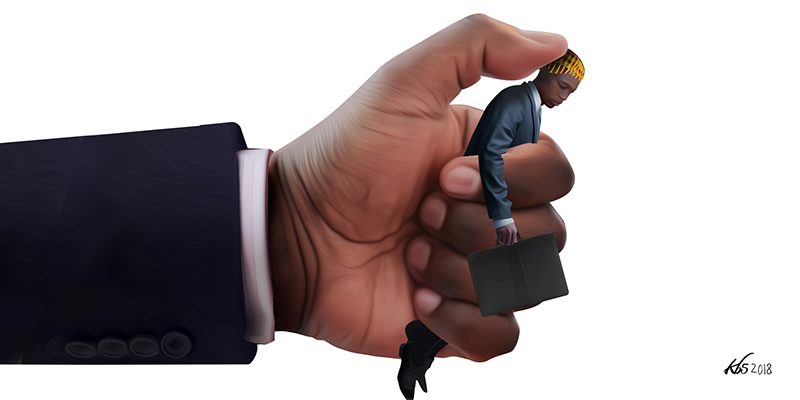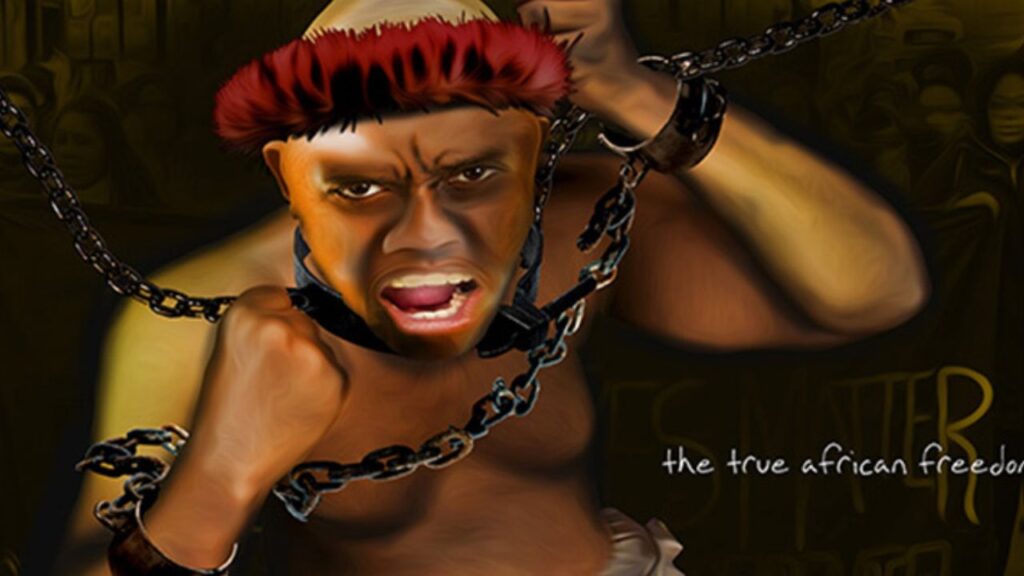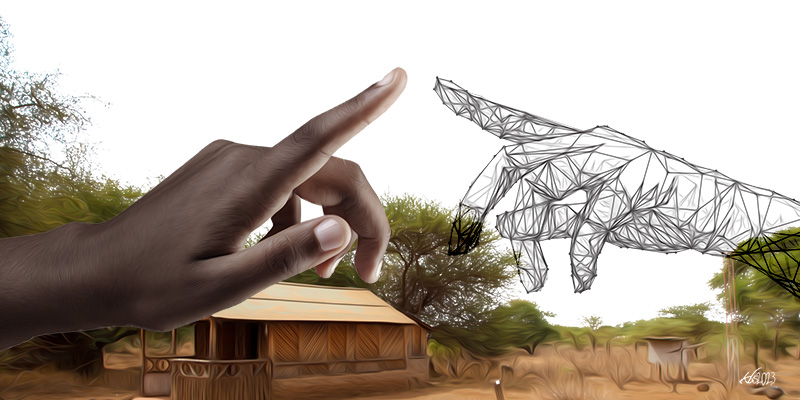The Christian scriptures state that a good man leaves an inheritance to his children’s children. This provides a key entry point into the question of intergenerational mobility of wealth, income and opportunity.
We’ve got to admit that meritocracy is often a myth. Hard work, single-minded focus, and determination are good but are not guarantees to success. The top predictor of a child’s socio-economic class is not his personality, education, IQ, talent, or exposure: it is the parent’s socio-economic status. Researchers Amy Traub and Tatjana Meschede once demonstrated that for African-Americans, and increasingly for non-white races around the globe, going to college doesn’t close the wealth gap; neither do two-parent household set-ups, family spending cuts, or working full time. If a child is poor/middle class/rich, there is a high chance that the parents are poor/middle class /rich, respectively.
Poor people usually have roughly a 10 to 20 per cent chance of ever ending up rich in their lifetime. In fact, the common ratios tend to be between 7 and 15 per cent. In most societies, upper middle class people have a 20 per cent or so chance of ending up rich. In fact, nearly 60 per cent of all people live and die within the social class that they were in in their 20s.
Let’s admit it: the rags-to-riches story tends to be anything but. Yes, there is always a tycoon who started on the streets and became a billionaire but that is the exception, not the rule. A huge proportion of those born into poverty will live and die poor. Contrary to what you keep hearing, education is great but it is not an equaliser; rich kids with low IQs graduate in higher numbers than poor kids with high IQs. It is family incomes, not merit, that primarily determines university enrolment, graduation, and future incomes.
The ability to generate a transformative kind of wealth within one’s lifetime is possible but neither normal nor possible for the majority of the population; usually, it takes about three to four generations of industrious heirs to achieve it. That’s the reason the good book instructs us that a good man leaves an inheritance for his children and his children’s children. The forces at play are referred to as the principles of inherited (dis)advantages.
Ethnicity of capital
Intergenerational mobility tends to be stubbornly calcified, which is a key reason why the deity prioritises the need for one to leave an inheritance for one’s progeny. Wealth is known to stay within certain families for between 500 and 800 years, as studies have demonstrated in Florence, England and ancient China. Capital is quite loyal to filial ties but most importantly, it manifests certain logic and sensibilities, including developing its nature from the demographic, geographic, intellectual, historical and political contexts within which it is employed. Notably, Amy Traub and Lara Sullivan’s study of racial inequality has demonstrated that barring any historical disruptions, capital tends to remain familial, and by extension, stays ethnic.
It is the Euro-American/Christian/White capital in the West whose hegemony has driven modern civilisation since the Renaissance – that’s the bane of global capitalism. This capital is decidedly white, decidedly male, decidedly Christian, decidedly elitist, and notably racist in its sensibilities, a persona it picked from its most famous brawling pioneers like Adam Smith, the rogue Commodore Vanderbilt, and the choleric John Rockefeller. Capitalism, as an initially Western logic, therefore, ought to be examined within the context of its interaction with global economic history, especially the rise of nation-states and slavery.
In Workers of the World: Essays Toward a Global Labor History, economic historians Kenneth Pomeranz and Marcel van der Linden have shown that, viewed from a global perspective, capitalism is notably discovered to have grown on the backs of slavery. The 18th century global oppressive structures that birthed racism and slavery were also central to the invention of the Industrial Revolution, especially the spectacular American capitalism.
It is the Euro-American/Christian/White capital in the West whose hegemony has driven modern civilisation since the Renaissance – that’s the bane of global capitalism. This capital is decidedly white, decidedly male, decidedly Christian, decidedly elitist, and notably racist in its sensibilities…
The American capitalistic experiment took shape in the 1820s just as one of its would-be patriarchs, Cornelius “Commodore” Vanderbilt, turned 26 and for the next 150 years it delivered a year-on-year wage rise, including surviving the infamous American Civil War of 1861-1865. However as the economy entered the 1960s, the rise of automation, women pouring into the workplace after the sexual revolution, the rise of immigration, and employers moving production abroad stalled this capitalist experiment.
The combination of technology and outsourcing production abroad gave American capital a velocity and agility that gave rise to the possibility of accelerated capital flight, as happened in the 1997 Asian financial crisis. In the 60s, Euro-American capital also learned that it could use debt as a tool for diplomacy and coercion on the global stage.
Of jackals and hit men
John Perkins, who authored the famous book Confessions of an Economic Hit Man, begins his narration in Quito, Ecuador. He then journeys us through half a dozen countries, painting tragic pictures of once thriving metropoles turned into volatile and crumbling credit-opoles by the vultures from Washington. He writes:
“Despite the fact that the money is returned almost immediately to corporations that are members of the corporatocracy (the creditor), the recipient country is required to pay it all back, principal plus interest. If an economic hit man (EHM) is completely successful, the loans are so large that the debtor is forced to default on its payments after a few years. When this happens, then like the Mafia we demand our pound of flesh. This often includes one or more of the following: control over United Nations votes, the installation of military bases, or access to precious resources such as oil or the Panama Canal. Of course, the debtor still owes us the money—and another country is added to our global empire.”
Weaponisation of sovereign debt as a tool for oppression emerges as an almost accidental discovery borne of the post-World War I world as the gold standard drew to a close, having dominated global commerce in late 19th and early 20th century. The increasing societal complexity occasioned by industrialist Henry Ford’s assembly line, the World War I military economy and the stock market boom exposed the limited monetary policy options that the gold standard could avail to 20th century governments. Under the gold standard, Central Banks often could only respond to economic downturns with spending cuts and raising interest rates, hoping that labour wage and commodity prices would drop low enough for the economy to self-correct.
In 1946, the political economist John Maynard Keynes resolved that both the headquarters of the World Bank and the International Monetary Fund, which he had helped found, shouldn’t be on American soil. His reservations over the location of the two institutions got torpedoed, as Washington had already secured a dozen allies to sway the vote on the matter in its favour. His death six weeks later set the Bretton Woods institutions firmly on US soil, inevitably rendering the two organisations and their nearly one dozen financial arms as American appendages rather than the global institutions that Keynes has envisaged.
Two years earlier, at the Bretton Woods Conference of July 1944, Keynes’s squabbles with US Treasury official Harry Dexter White had ended in surprising mutual agreement regarding the creation of new post-war institutions for regulating international flow of capital, prohibiting arbitrary currency alterations, stabilising exchange rates, and facilitating international financial cooperation.
Together they built a closely monitored international financial system with post-war reconstruction institutions for capital and currency regulations that replaced the uncoordinated system of the pre-1930s, actions that globally centered the US financial system, laying the groundwork for the rise of economic hit men and the debt tentacles.
By the time journalist Water Isaacson and historian Evans Thomas published their famous book The Wise Men: Six Friends and the World They Made in 1986, the two institutions’ debt arrangement with Kenya – predicated on structural adjustments – was already six years in the making and was creating negative economic effects in Nairobi. The “wise men” comprised six shadowy foreign policy wonks in Harry Truman’s government beginning in 1945 just as the Cold War was reshaping the global hegemonies and reorienting geostrategic loyalties. The six, in typical wise men lore, brought forth hegemonic gifts, not in the strain of gold, myrrh, and frankincense but NATO the Marshall Plan and, alongside Dexter and Maynard, the World Bank. The modern-day pragmatic internationalism, non-partisanship, and America’s aversion to ideology exemplified in catch-phrases such as “for the greater good” reflect some of the hallmarks of their beliefs. The legacy of the six men, namely, Dean Acheson, George Kenna, John McCloy, Robert Lovett, Averell Harriman, and Charles Bholen, played the handmaiden to capitalism’s inherent need for eternal global expansion.
From Kenya, with love
Perkins-esque economic hitmanship in Kenya started in 1980 with a $55 million Structural Adjustment Credit (SAC) by the World Bank, which rose to a $130.9 million loan in 1983. The next six years dragged in three sectoral adjustment loans (SECAL): 1986 Agriculture ($60 million), 1988 Industry ($165.7 million), and 1989 Finance ($231.3 million) to complement the two previous structural adjustment programs (SAPs).
While Kenya didn’t cede any particular strategic assets to the Western oligarchs, the 1971-1972 oil prices shocks had created the perfect opportunity for the West to rope in Kenya into its sphere, away from Soviet influence. SAPs constitute a raft of policy decisions, including market liberalisation, price decontrols, and budget cuts. SAC is the monetary incentive granted to a government to implement SAPs. Sectoral adjustment loans is a credit facility extended to a specific sector of the economy and pegged on the government agreeing to implement SAPs in that particular industry or sector.
These were followed by three more SECALs in the 1990s: 1991 Export Development ($149.1 million), 1991 Agriculture II ($75 million), and 1992 Education ($100 million). The disastrous 1996 SAC I ($126.8 million) drew the most anger from the Kenyan public, having been incorrectly tied to some of the economic tailspins unleashed by Kamlesh Pattni’s Goldenberg scandal. SAPs’ drastic economic impact skyrocketed interest on debt payment from 8.3 per cent between 1964 and 1969 to 23 per cent in 1995/96 and 25 per cent in 1997/98, the debt having grown by 362 per cent, from $36.7 billion in 1990 to $169 billion in 1998.
Curiously, the most famous studies on Kenyan SAPs by Ikiara (1990), Swamy (1994), and Ihonvbere (1996) on the effects of the economic hit jobs notoriously ignored the social effects that SAPs had unleashed. The neoliberal cuts in welfare spending, price decontrols, market liberalisation, and budget cuts strangled the health, education and social services sectors, which led to a significant decline in the quality of basic services available to ordinary wananchi. Three decades later, Kenya is yet to fully recover from the debilitating effects of SAPs.
Enter the Red Brigade
French political economist Eric Toussaint, in his report, “Debt as an Instrument of the Colonial Conquest of Egypt”, aptly observed that “in the case of Egypt and Tunisia, the European powers used debt as their most powerful weapon for ensuring domination, leading to the total submission of previously independent states”. China, a rising economic power throughout the 1990s and 2000s, would learn and perfect the West’s weaponisation of debt through economic hitmanship.
As of 2007, the People’s Republic of China had a massive financial muscle of $1.4 trillion in currency reserves and a $200 billion sovereign wealth fund, which grew to $3.44 trillion and $810 billion, respectively, by 2013. This financial war chest would come in handy in China’s Belt and Road Initiative.
French political economist Eric Toussaint…aptly observed that “in the case of Egypt and Tunisia, the European powers used debt as their most powerful weapon for ensuring domination, leading to the total submission of previously independent states”. China, a rising economic power throughout the 1990s and 2000s, would learn and perfect the West’s weaponisation of debt through economic hitmanship.
The Belt and Road Initiative encompasses an overland route through Eastern Europe as well as the ports of Quanzhou in eastern China, Kuala Lumpur, Colombo, Gwadar in the Middle East, Mombasa, Djibouti, the Suez Canal, Piraeus, and ends in Venice. In a typical Merchant of Venice fashion, Beijing lends money for unviable infrastructure projects that inevitably precipitate a default. And like Shakespeare’s Tubal, it comes to claim its pound of flesh structured as 60-90-year port leases, as has happened to the port of Djibouti and Hambantota port in Sri Lanka.
In March of 2018, the think tank Centre for Global Development (CGD), in a report titled “Examining the Debt Implications of the Belt and Road Initiative from a Policy Perspective”, determined that eight countries (Montenegro, Laos, Mongolia, Pakistan, Kyrgyzstan, Tajikistan, Mongolia, and Djibouti) were likely to default on their debt obligations to China. Tellingly, all these countries lie on the Belt and Road Initiative’s route.
The IMF’s Wenjie Chen and Roger Nord articulated this in their ominous report “China and Africa: Crouching Lion, Retreating Dragon?” that showed that in just a few years Beijing has become, by far, the largest source of (bilateral) loans, lending over $96 billion to sub-Saharan African countries (excluding South Africa).
Today, China controls 72 per cent of Kenya’s bilateral debt or 10 per cent of its total debt. Interestingly, the nearly Sh450 billion Standard Gauge Railway (SGR) loan accounts for a majority of the credit facility that’s maddeningly accompanied by exorbitant interest rates.
All this is happening against a backdrop of increasing economic hardship across the country. A June study estimated the number of starving Nairobi residents to be 900,000 out of a total population of 4 million, while in March 2018 Kenya got ranked as having one of the highest numbers of extremely poor people at – 6th in Africa and 8th in the world. Compound this with the World Bank’s latest report that estimated the number of starving Kenyans to be 17.4 million and the Kenya National Bureau of Statistics (KNBS) figure of 16.4 million starving Kenyans out of an estimated population of 49 million people, and you have an economically strained population. The infrastructure binge hasn’t translated to a notable rise in personal incomes for the struggling majority.
In 2013, Kenya owed China about $630 million, a figure that had risen to $5.57 billion (Sh.557 billion) by May 2018. Meanwhile, the country paid back Sh435.7 billion in the 2016/17 financial year, followed by another Sh870 billion, or over 60 per cent of its tax revenue, in the 2017/18 period – a figure that’s expected to reach Sh1 trillion in the 2018/19 period.
Meanwhile, the best case scenario for revenue collection stands at Sh1.3 trillion. The Treasury has just revealed that the government expects to collect Sh2.3 trillion by 2022, an unrealistic and highly optimistic figure, given that the country will be borrowing at least a trillion shillings a year from 2019 through 2024 to compensate for falling revenues occasioned by capital flight and the collapse of over 2.2 million small and medium enterprises (SMEs) between 2012 and 2016 alone. The 2016 National Micro, Small and Medium Enterprises (MSME) Survey found that half a million MSMEs die every year in Kenya due to high operating costs, declining incomes and losses incurred by business, which suggests that the Kenyan economy is not doing well at all.
A struggling economy and a debt estimate of between Sh9 trillion and Sh10 trillion by 2022 – equivalent to 120 per cent of the current 8.65 trillion GDP – is the more likely scenario. There’s no doubt that servicing this debt will be a headache for the government and defaults aren’t a far-fetched possibility.
Meanwhile, the best case scenario for revenue collection stands at Sh1.3 trillion. The Treasury has just revealed that the government expects to collect Sh2.3 trillion by 2022, an unrealistic and highly optimistic figure, given that the country will be borrowing at least a trillion shillings a year from 2019 through 2024 to compensate for falling revenues occasioned by capital flight and the collapse of over 2.2 million SMEs between 2012 and 2016 alone.
And China, just like it did in Djibouti, Zambia and Hambantota, will seek to extort a lease for strategic assets as a trade-off, key among them being the port of Mombasa that lies on the Silk Belt and Road route.
For a deeply religious country, we overlooked one of the core verses in Proverbs 13:22 about generational wealth. We have auctioned our children’s and their children’s coastal (and strategically important) inheritance for a worthless piece of rail. Future generations will pay dearly for this mistake.








